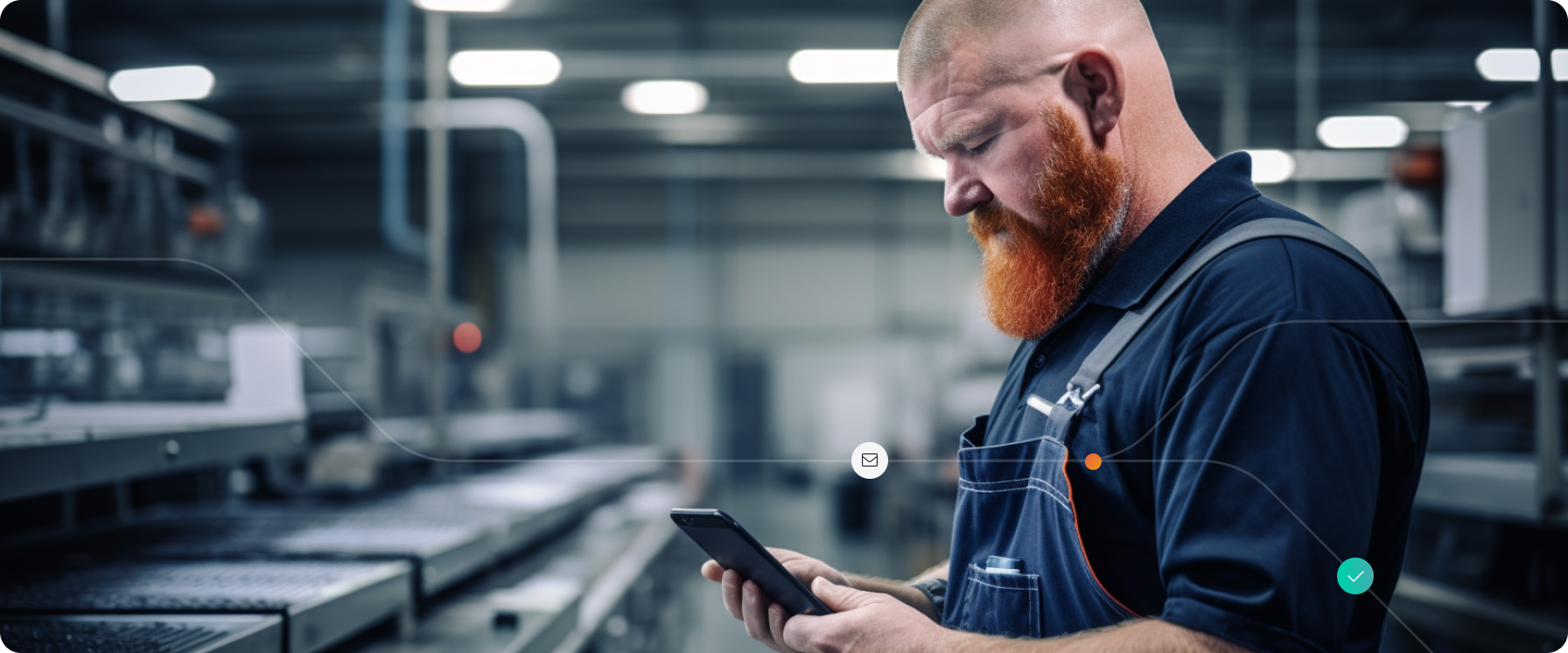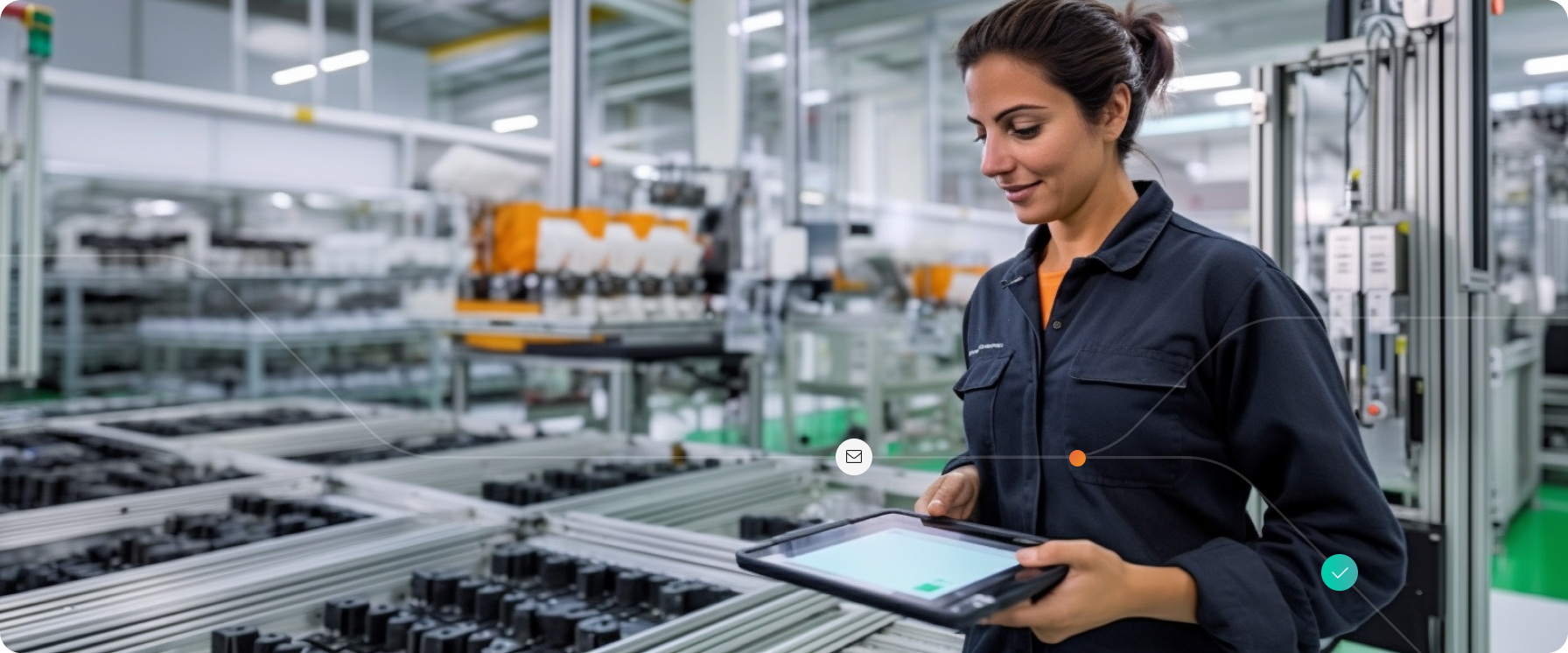The definitive guide to digital Andon systems in 2024

Andon, a term derived from the Japanese word for “lantern,” has illuminated the path to excellence in lean manufacturing for decades. Much more than a tool, it’s a philosophy predicated on achieving superior efficiency, quality, and problem-solving capabilities in the factory.
Understanding Andon
Andon, first introduced by Toyota as part of the Toyota Production System (TPS), is a visual management tool that enables real-time communication of production status, issues, and performance. It involves the use of lights, displays, or signals to alert teams to deviations from the standard or to signal the need for assistance.
The primary objectives of Andon are to:
- Facilitate quick problem identification and resolution.
- Promote transparency in the manufacturing process.
- Empower operators to stop production when quality or safety issues arise.
The state of Andon today
In today’s fast-paced manufacturing environment, the principles of Andon remain highly relevant. The growing complexity of production processes (with more and more product variants) and increasing customer demands for quality make Andon more critical than ever. At the end of the day, plant managers are relying on speedy responses to disruptions to keep the belts running, the product flowing and stay ahead of the growing competition. At the same time, the emergence of digital technology offers exciting possibilities for enhancing the effectiveness of Andon systems. It’s time for factories to embrace the digital transformation and reap the benefits.
Traditional Andon methods are no longer fit-for-purpose
Traditionally, Andon systems in factories have relied on physical signal lights, buzzers, and manual communication. While these methods have served their purpose, they come with inherent limitations
• Delay in information flow:
Traditional Andon systems introduce delays in conveying critical information, as they rely on someone manually activating the signal and face-to-face communication.
• Lack of data integration:
Older Andon systems lack the capability to integrate with other systems, such as an ERP or MES, making it close to impossible (or extremely laborious) to gather and analyze data for continuous improvement.
• Limited accessibility:
Information is typically confined to the factory floor, making it very difficult to collaborate and monitor remotely.
The power of modern, digital Andon systems
Digital Andon systems are revolutionizing the manufacturing landscape by addressing the shortcomings of traditional methods. Here’s why
• Real-time data:
Digital Andon systems provide real-time visibility into production processes, enabling instant identification and resolution of issues.
• Integration:
They seamlessly integrate with other manufacturing systems, creating the transparency required for comprehensive data analysis and informed decision-making.
• Remote access:
Modern Andon systems can be accessed remotely, enabling experts (e.g. maintenance engineers) to provide support and collaborate with on-site teams from anywhere.
• Data analytics:
These systems offer powerful data analytics tools that help in identifying trends, patterns, and feeding the continuous improvement loop.
Configuring a modern Andon system
Let’s consider a manufacturing scenario in which a factory produces automobile components. To configure a modern Andon system, follow these principles:
• Define key metrics:
Identify critical performance metrics such as production cycle times, defect rates, and equipment downtime as aligned with your production goals.
• Identify data sources:
Determine the sources of data needed to monitor these metrics. This may include IoT sensors, ERP and/or MES software, quality control systems, and smart devices.
• Real-time monitoring:
mplement digital displays and notifications that provide real-time updates on the identified metrics, allowing operators to spot issues instantly. Depending on the station, this could be done using industrial-grade tablets, smartphones or smartwatches.
• Automated alerts:
Set up automated alerts that trigger when metrics deviate from acceptable ranges. For example, if the defect rate exceeds a predefined threshold, the system should send an alert with the right information, to the right person.
• Remote accessibility:
Ensure that the Andon system is accessible remotely via mobile devices or computers, enabling off-site experts to provide immediate assistance. Data analytics: Leverage analytics tools to collect and analyze historical data,
• Data analytics:
Leverage analytics tools to collect and analyze historical data, identifying recurring issues and areas for process improvement.
Workerbase’s Connected Worker Platform: Digitizing Andon Systems with Ease
Workerbase’s Connected Worker platform offers a cutting-edge solution for manufacturers seeking to digitize their Andon systems. Workerbase empowers workers on the shop floor with wearable devices and mobile applications that seamlessly integrate into the manufacturing environment. If you’re looking to make the transition to a modern Andon system, here’s how you can make it easy for yourself:
• Real-time monitoring::
Workers can access real-time data on key metrics, enabling them to identify and address issues as they occur.
• Automated alerts:
The platform generates automated alerts when predefined thresholds are exceeded, ensuring prompt action. These alerts are instantly displayed to the target audience with all the information they need to take appropriate action.
• Remote access:
Modern Andon systems can be accessed remotely, enabling experts (e.g. maintenance engineers) to provide support and collaborate with on-site teams from anywhere.
• Automated escalation and delegation:
Set up rules so the resolution task can be escalated or delegated to another person – based on their location, availability, or skillset.
• Data analytics:
Workerbase’s platform acts as an intuitive front-end for your entire IT stack, enabling manufacturers to gain insights from multiple data sources in one place – making it easier to spot and prioritize areas for improvement.
Conclusion
In the world of manufacturing, the transition to a modern, digitized Andon system is no longer a luxury; it’s a competitive necessity. Digital Andon systems provide real-time visibility, integration with other systems, and powerful analytics, equipping manufacturers with the tools needed to maintain optimal production, quality, and efficiency.
Workerbase’s Connected Worker platform already embodies this transformation, enabling manufacturing companies to embrace the future of Andon systems and gain a significant competitive advantage in an ever-evolving industry landscape.
Ready to give it a try? Contact us to learn more!



